
Improve good posture habits with exercises and home remedies
Just start to notice.

For those of you who just opened this article, take a moment and pause for a bit.
Pay attention to the way you're seated, and notice your posture. Are you naturally leaning forward with your head tilted forward?
Or is your back already bent like a rainbow slouching in front of the screen? These are bad habits that go unnoticed in everyday life like this, and sometimes your casual habits can be what's causing pain to your spine all along!
What causes poor posture in our lifestyle today?
What are the long term side effects of poor standing posture and sitting posture that might affect us in the future?
Tablets and mobile phones have become an essential tools in modern society, but for this reason, many people have developed the habit of looking down at their phones. We call this the text-neck syndrome. We always ignore how we sit, how we look at our phones and neglect our sitting posture. Do you often feel neck and shoulder pain after long hours of looking down at your mobile phone or working at a desk?
This is because there are many muscle tissues in the head and neck that are connected to the shoulders. Keeping that poor posture of that position unchanged for a long time will lead to fatigue and soreness of relevant muscles without sufficient rest.
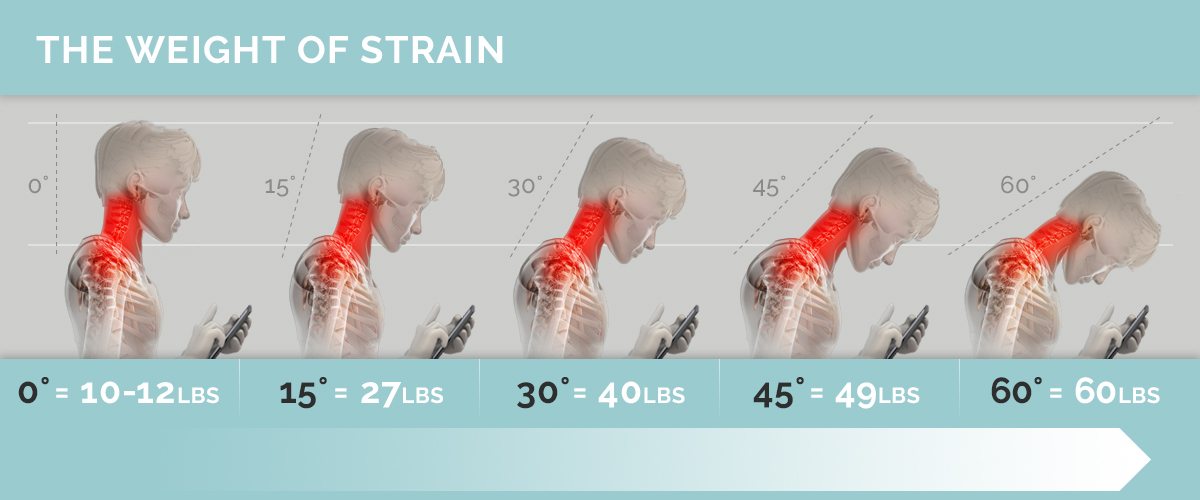
Also see tips to prevent text-neck
According to researches, while looking down at your mobile phone, your neck angle is tilting roughly 45 degrees or more, with the cervical spine needed to withstand more than 22 kg of pressure. This is equivalent to carrying a large bucket of mineral water while walking.
If you maintain this posture for a long time, it shifts the head's centre of gravity forward creating more tension to the shoulder and neck muscles to maintain the balance of the spine. This poor posture can easily cause fatigue and stiff muscles. An imbalanced spine will cause a jam on the nerves and aggravate the soreness, this is where you will experience neck discomfort, pain, stiffness as well as headaches and other symptoms or even injuries.
With many nerves distributed around the neck and shoulder areas, there are two carotid arteries and two vertebral arteries on the left and right sides of the cervical spine to supply blood to the brain. The cervical spine protects the spinal cord and is also an extension of the central nerve of the brain.
Long-term habits of poor posture could cause a variety of cerebral nerve compression, light dizziness and pain, severe blurred vision, tinnitus and other symptoms.
4 tips to improve your posture
1. The art of sitting
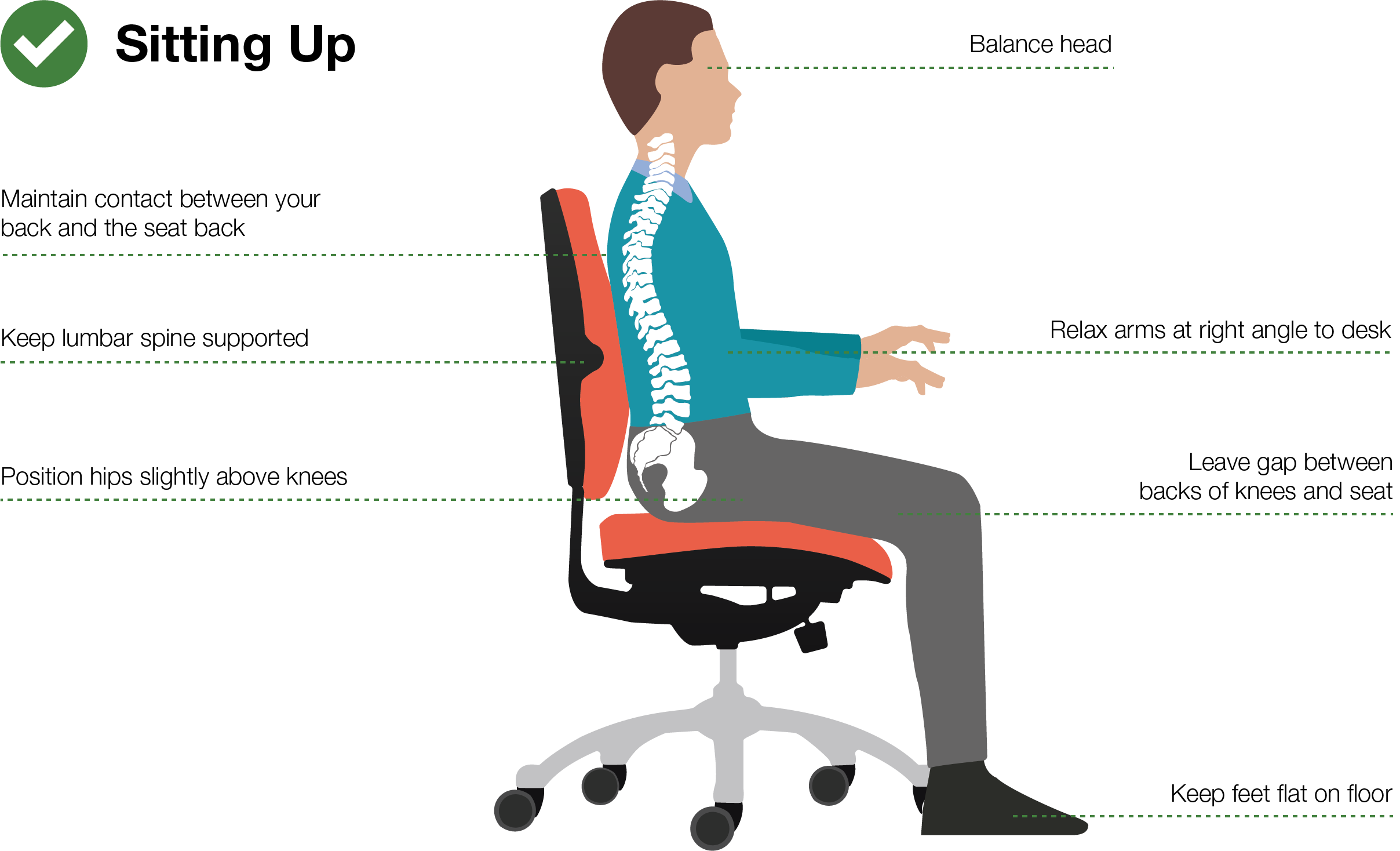
Find out more about the art of sitting
Maintain a straight sitting posture, ensuring that your back is aligned with the backrest of the chair and that your arms are able to bend at 90-120 degrees while using the computer. This posture prevents excessive tension in the shoulder and neck muscle groups. A good indication is when your shoulder muscles are not stiff when you are in a right posture
2. Get up and move around every hour
Avoid keeping the same position for a long time, get up every hour to exercise muscles and bones, stretch appropriately, relax the tense muscles, and increase the activity and flexibility of the neck and shoulder.
3. Cultivate a good standing posture as well
3.Remind yourself to stand properly at all times. Keep your chest straight, chin tucked in, not hunched, and from the side, your head does not move forward over your shoulders.
4.Create daily exercise habits
You can find out how these 6 exercises that improve posture and reduce back pain can help improve your posture.
Exercises that helps improve posture and ease back pain
Standing exercises
These moves can be done when you’re in an elevator, waiting in line or while you’re standing in the office kitchen waiting for your lunch to heat up in the microwave.
Reverse High Five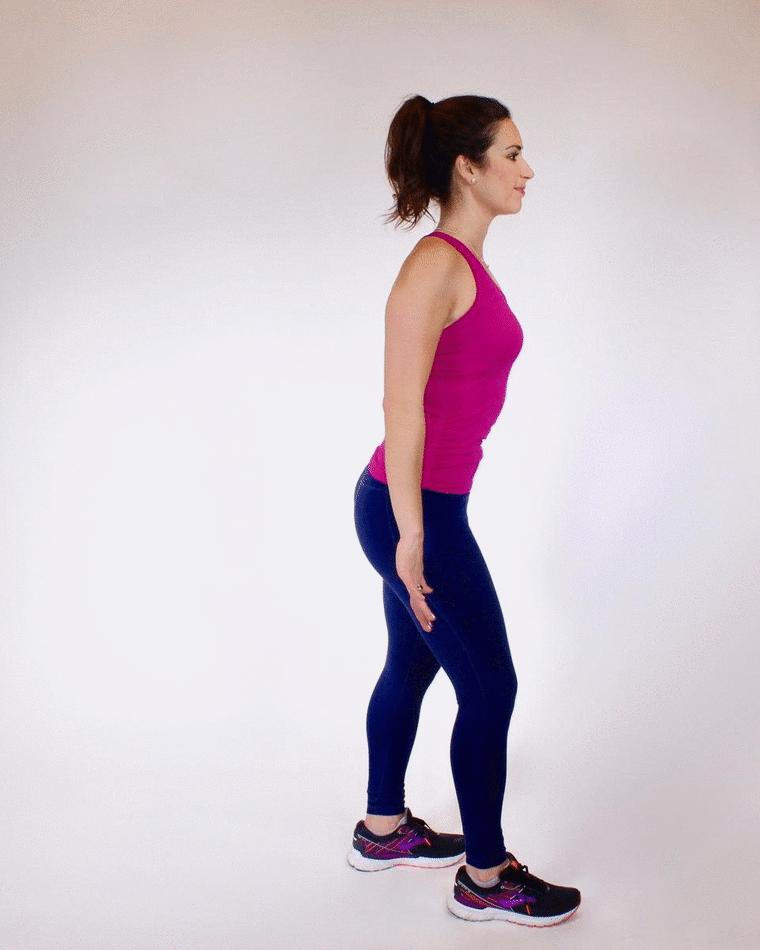
While standing tall, shrug your shoulders up towards your ears and then relax them down. Turn the palms to face the back of the room. Press the hands back as if you’re trying to give someone a double high five. Pulse 10 times and then rest.
Chest Opener
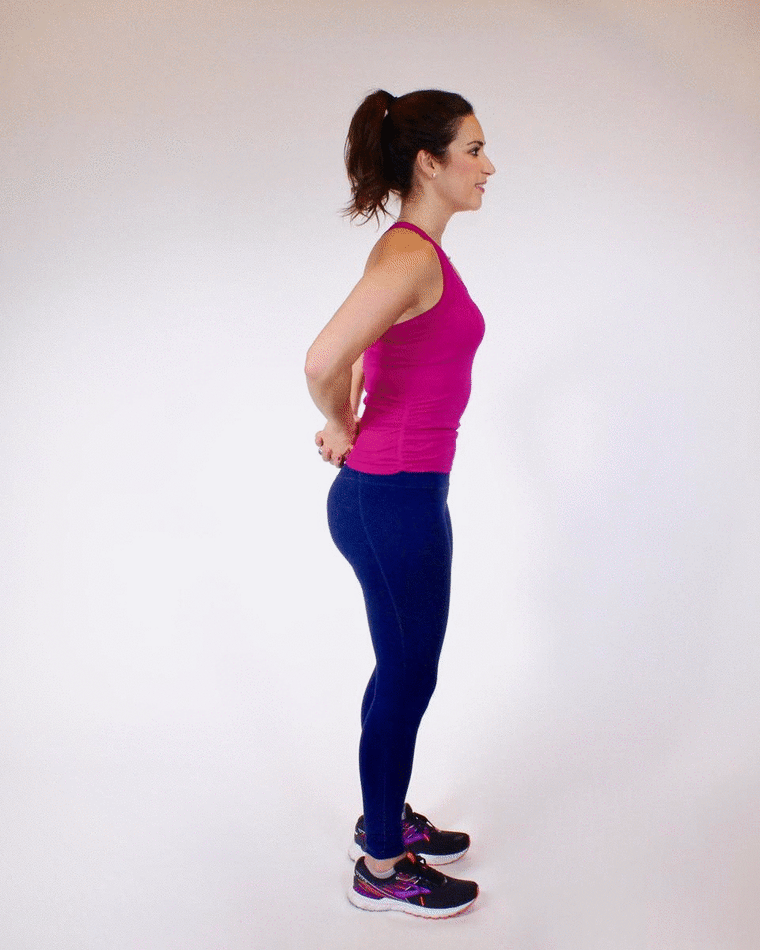
Seated exercises
These exercises are perfect for the office! You can sit at your desk in an upright chair and perform these stretch and strengthening exercises.
Goalpost Squeeze
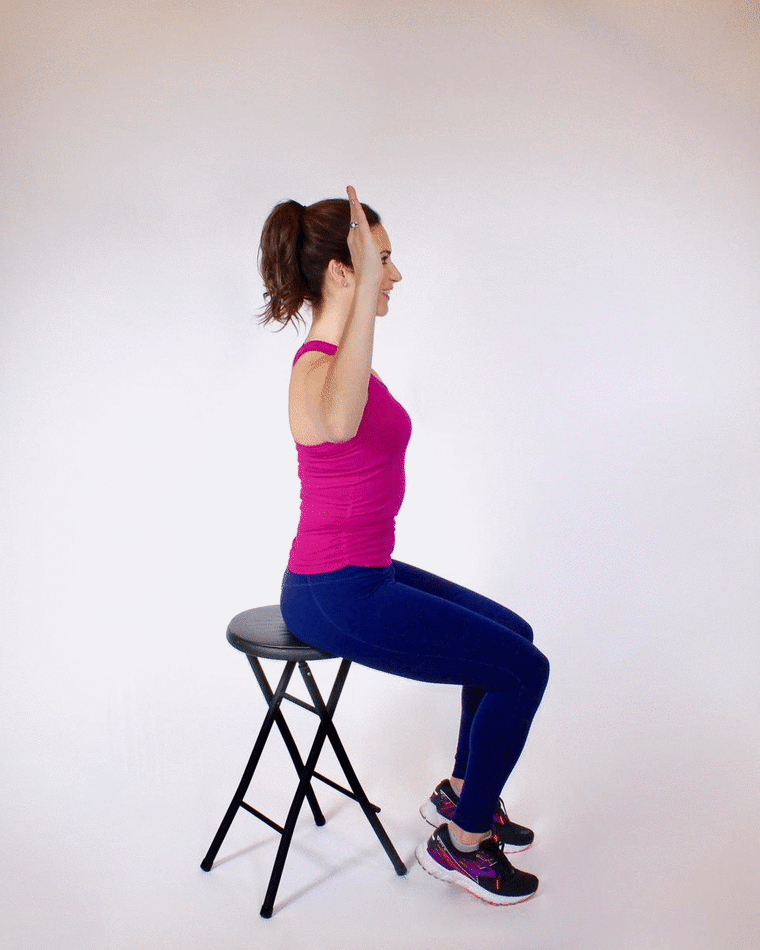
While sitting upright, lift your arms up into a goalpost position with your elbows bent at a 90 degree angle even with your shoulders. Relax your shoulders down, and then pull the elbows towards the back of the room. Imagine that you’re squeezing a marble in between your shoulder blades as you work the upper back. Release. Repeat 10 times.
Armpit Opener
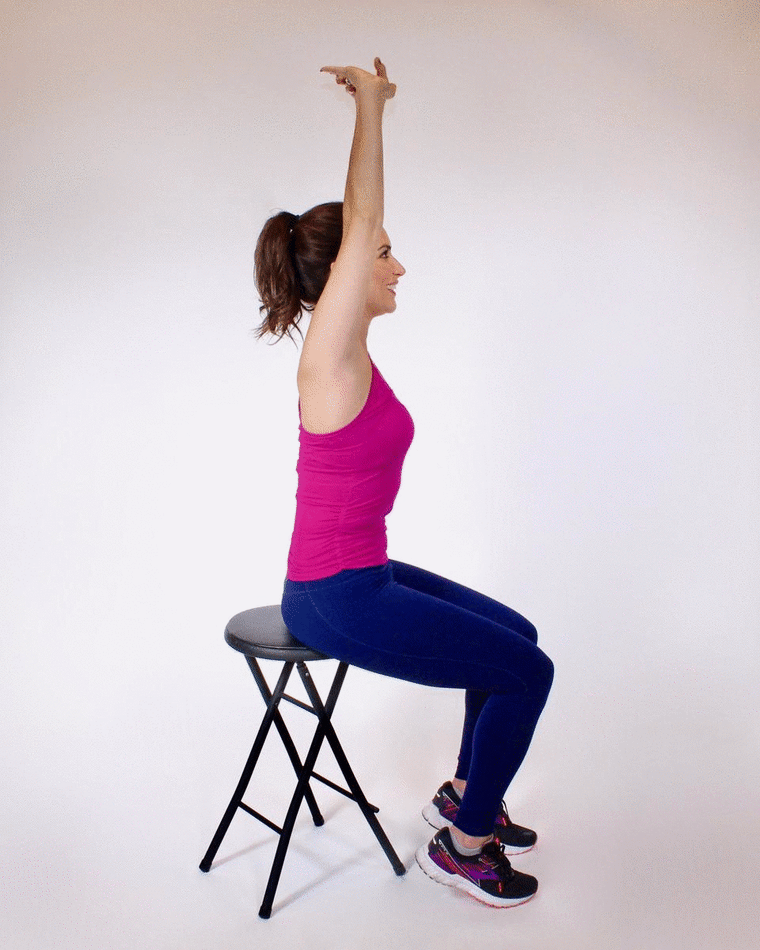
To open up the chest, reach the arms out to the sides and up and overhead, clasp the hands at the top. Stretch the arms up, and then bend the elbows towards the back of the room to stretch the chest and armpits. Hold for a breathe, and then straighten the arms back up. Repeat 10 times.
Floor exercises
These exercises can be performed in the comfort of your home on a yoga mat, rug or even in bed!
Mini Cobra
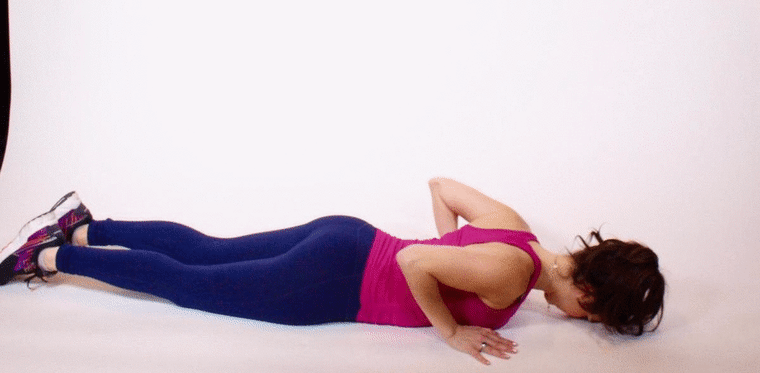
Lying down on your stomach, place your hands flat on the ground under your shoulders. Pull your naval in towards your spine, and squeeze your inner thighs together. Rest your forehead down on the ground. This is the starting position. Pretend that you’re pushing a marble forward with your nose, and bring your head forward and up as you press down through your palms to lift your shoulders and chest off the ground. Keep the elbows bent. Squeeze your shoulder blades together to work your upper back even more. Then, slowly lower back down to the ground resting your forehead down. Repeat this 10 times.
Arm Roll Stretch
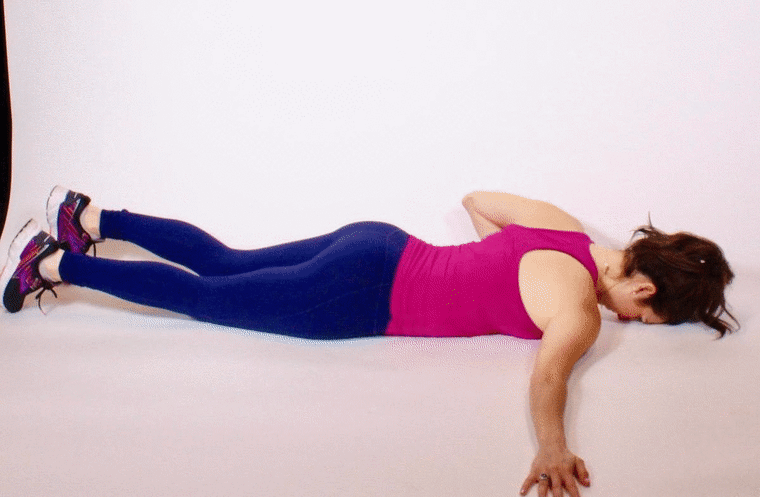
Lying down on your stomach, reach your right arm out to the right directly in line with your shoulder. Place your left hand on the ground under your left shoulder and use it to gently push your body to the right, rolling towards the right arm (while it remains on the ground). You can bend your left knee and place your left foot flat on the ground behind your right knee for stabilization. Hold this stretch for 30 seconds or 5 deep breaths. Feel the stretch in the front of the chest and in the armpit of the right side. Then repeat to the left side.
Sitting for a long time in the office can easily cause various neck and back discomforts. Repeated practice of the above exercises can relieve the tension in the back muscles and improve posture over time
Stress may cause cervical spine pain
 When faced with stress or anxiety, it causes the sternocleidomastoid muscle in the front of our neck to contract and tense, causing an imbalance in the tension around the cervical spine, which might lead to shoulder and neck pain.
When faced with stress or anxiety, it causes the sternocleidomastoid muscle in the front of our neck to contract and tense, causing an imbalance in the tension around the cervical spine, which might lead to shoulder and neck pain.
Exercises could help good posture habits
A lack of exercise, in the long run, could reduce the function of muscle tissues and organs by up to 30% in the human body, reducing muscle strength and causing symptoms such as sore shoulders and back pain. You can consider:
- Choose a form of exercise that interests you.
- Take steps to develop good exercise habits.
- Make exercise plans according to your actual situation.
Muscles strains or injuries can affect your posture too
As the saying goes, "it takes 100 days to heal your heart ", when you have a muscle or bone injury, it takes a long time to recuperate and recover. Sometimes neck injuries caused by accidents do not manifest recovery immediately, but may slowly recover from time to time. Therefore you need to take extra care of your cervical spine in general to avoid get future pain.
Temperature might be a cause of stiff necks
According to Chinese medicine, neck and shoulder problems are meridian problems. If you don't keep your neck warm, it will cause stagnation of the meridians and blockage of Qi and blood.
The weather in Singapore is hot and humid, and many people turn down the air conditioning to keep cool. If the cold air blows right on the back or neck, the neck may be irritated, causing the blood vessels around the neck to constrict, and the blood circulation in the neck and shoulders could be affected.
Over time, this may cause the neck muscles to continue to have moments of spasm and contraction, hindering blood circulation, which can seriously lead to insufficient blood supply to the brain, producing dizziness, blurred vision and memory loss.
How to prevent stiff necks in cold temperatures
Pay attention to the neck insulation, do not let the fan or air conditioning air directly against the neck blowing after you take shower .
Usually when you catch a cold, you should make a hot compress to the neck in time to remove the chill of the cervical spine and prevent the blood from not circulating.
In daily life, we need to supplement protein and calcium, and eat more fresh vegetables and fruits. Eat foods rich in calcium such as milk, soy beans, black beans and other items.
Cervical spondylosis is damp heat that block the meridians, should eat more pueraria root, bitter gourd, loofah and other fruits and vegetables, such as heat and muscle clearing, such as cold dampness block the meridians, should eat more food similar to mutton isotherm through cold, such as blood deficiency Qi stagnation, should eat more rooster, carp, black beans and other food. In short, symptomatic eating can be conducive to the rehabilitation of patients with cervical spondylosis.
Cervical Spondylosis Stretches & Exercises
The wear and tear of the spinal discs in the neck as we age is referred to as cervical spondylosis. Osteoarthritis symptoms appear when the discs deteriorate. This can result in achiness and discomfort in the neck, as well as a reduction in neck mobility.
Begin by gently stretching your neck by moving your head from side to side as though gazing over your shoulder. Neck rotation is what this is called. Go back and forth approximately 5 times, holding it for about 10-15 seconds each time. Next, on either side, place your ear on your shoulder. Check to see whether you're shrugging your shoulders up.
This is what is known as side bending. Go back and forth approximately 5 times, holding it for about 10-15 seconds each time. Bring your chin to your chest and then raise your eyes to the ceiling. Neck flexion and extension is what this is called. Go back and forth approximately 5 times, holding it for about 10-15 seconds each time. After that, you'll practice isometric workouts in both directions. Basically, when you stimulate a muscle but don't move it, you're doing this.
Gently press into your hand in each direction to do this. Each of them should be held for 3-5 seconds. To achieve a stretch through your trapezius muscles, position your hand under your thigh to hold your shoulder down, then side bend your head to the opposite side and gently apply pressure with your other hand. Hold for 30 seconds on each side and repeat three times. The levator scapulae muscle will get the ultimate stretch. When you shrug your shoulders, this is the muscle that is utilized, and it can get overused if you are anxious.
Place your arm over and behind your shoulder on the side of the discomfort. Then, using your opposite arm, lay it on top of your head, slightly behind it. Apply moderate pressure to the opposite knee of the painful knee for a nice stretch. Hold for 30 seconds on each side and repeat three times.
The impact of blood pressure on the cervical spine
Dizziness can be caused by sudden changes in posture, which is very frequent in the elderly. Inappropriate postures and abrupt posture changes, such as from reclining to sitting, sitting to standing, can produce symptoms such as dizziness. Postural hypotension is the term used to describe all of these symptoms.
The elderly are more vulnerable to postural hypotension. According to a poll conducted in Singapore, 5 to 20% of seniors over the age of 65 would suffer dizziness as a result of abrupt changes in posture. It is simple to create fall injuries, which can occasionally impair the cervical spine, if you do not pay attention to everyday prevention.
Cervical spine discomfort will exacerbate the effects of high blood pressure and have a negative influence on one's health.
Good sleeping positions that helps with good posture habits
Not only may getting enough sleep help you feel less tired, but it can also boost your immunity. However, some lifestyle behaviors might disrupt our sleep. Poor sleeping posture and habits increase the stress on the spine, which not only causes weariness but also aggravates the symptoms of waist and neck discomfort.
Neck curvature, chest curvature, lumbar curvature, and sacral curvature are the four physiological curves in the human spinal column. Correct sleeping posture is to conform to the curvature of the neck, using a pillow cushion in the lower portion of the neck to keep the cervical lordosis curve constant. When we sleep, the cervical spine relaxes, effectively alleviating muscular tightness.
Pillows that are either too high or too low, or are not properly supported

For various people, a high or low pillow may provide varied outcomes. For someone with a flat body shape, a high cushion may induce neck pain and a bad sleeping position. For someone with curved head structures, a low cushion might provide a similar effect.
The cervical spine is prone to excessive forward flexion when the pillow is elevated for a long period, and the muscles and ligaments behind the cervical spine are prone to strain, hastening the deterioration of the cervical spine. It may cause the cervical physiological curvature to become straight and flexion with time, as well as the development of cervical spondylosis.
The physiological curvature of the body and the thickness of the muscles determine the height when sleeping on the back. In general, when lying on one's side, the height is coupled with the distance between the shoulders and the side of the neck, which is measured scientifically. The joints and muscles of the shoulders and neck can only be relaxed for greater rest when combined with the normal physiological curvature.
Using a pillow that could correct to a good posture might experience some discomfort for the a small period of time
When you have issues with your cervical spine and sleep, you may be hesitant to try a range of pillows. Because the cervical spine is in close touch with the pillow, it's critical to choose a pillow that's not just comfortable, but also one that's right for you.
The height and length of the cushion, however, will vary depending on each person's physiological features and habits. Adapting to the natural curvature of the neck is very essential.
Choosing a pillow that doesn't suit you well for a long period might cause muscle and bone pain. Our muscles have a memory, and sleeping on the wrong pillow can keep them stiff for extended periods of time. Once you find the appropriate cushion for you, it might take some time for the tense muscles to relax. As a result, a good match for you is one that holds up over time.
Having a decent pillow may improve sleep quality, and having a cushion that is right for them is a health guarantee.
To correctly estimate the length of your neck and shoulder, Mpillow uses a professional algorithm. It monitors your sleeping habits and health problems on a regular basis to build a pillow that is right for you, giving great sleep while also safeguarding your health.
How Mpillow at home could help improve posture
 To correctly estimate the length of your neck and shoulder, Mpillow uses a professional algorithm. It monitors your sleeping habits and health problems on a regular basis to build a pillow that is right for you, giving great sleep while also safeguarding your health.
To correctly estimate the length of your neck and shoulder, Mpillow uses a professional algorithm. It monitors your sleeping habits and health problems on a regular basis to build a pillow that is right for you, giving great sleep while also safeguarding your health.
Using different firmness of the synthetic fibre, the Mpillow upper uses 3D Hollow fibre is to adjust the softness. The lower layer is made of 6D Fibre-ball is to adjust the firmness, which provides a comfortable sleep for you.
The pillow can be adjusted according to the curve of your head, the length of your neck and the size of your shoulders. That's why Mpillow uses an "M shape," with different partitions that allow you to sleep in different positions and fit your head and neck no matter how you sleep.


Neck Support Capabilities
For back sleepers, the elongated wedge in the centre part of the Mpillow provides the cushion support that will be needed for enhanced sleeping posture.
A gentle slope extending from the middle of the pillow supports the head and neck of the sleeper.
Shoulder Recess Designs
To create the designated spaces for your shoulders, the shoulder recess is created, ensuring that your shoulders are getting the right fit. Enabling your shoulder(s) to rest on the mattress with ease.
Shape Compartment Control
Separated into 3 compartments, fillings in each compartment would stay in shape and density.
Anti-Slip Base
Made with a silicon pattern base, the anti-slip prevents the pillow from moving about or falling off; it keeps the pillow where it should be.
Hygienic Protection Layer Design
Adopt four layers of protection, play a better anti-mite antibacterial effect, care for your sleep. The outside has pure cotton pillow towel, fresh and breathable, the interior adopts the latest waterproof layer fabric, to prevent sweat and saliva caused by bacteria breeding, pillow yellow. Unlike traditional pillows, Mpillow can be removed and cleaned, while providing a pillow wash bag for easy hygiene and a fundamental elimination of some mites and bacteria.



